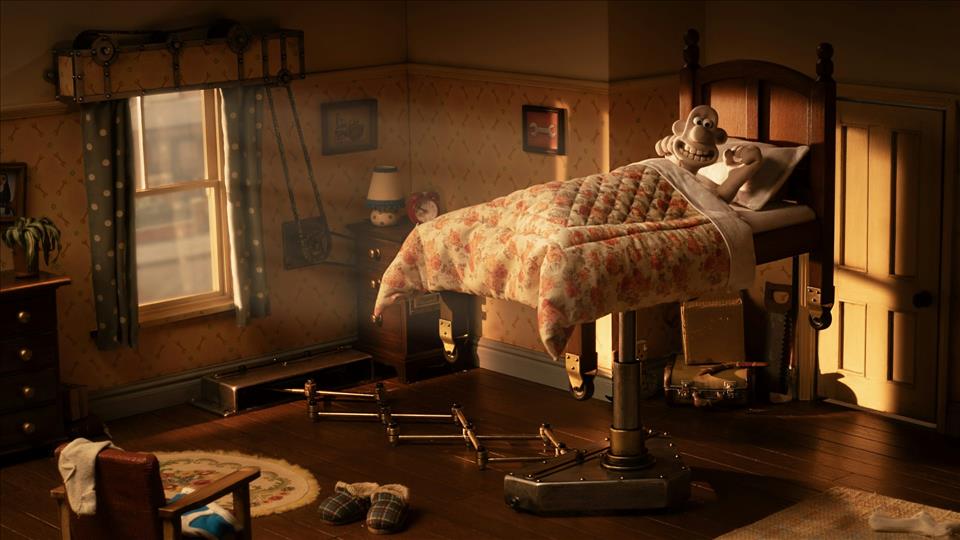
Wallace And Gromit: You'd Never Know It Wasn't Peter Sallis In Vengeance Most Fowl Thanks To Expert Vocal Mimicry
We were halfway through this claymation, stop-motion spectacle before I remembered that Wallace's voice was not being played by actor Peter Sallis , who sadly died in 2017, but instead had been seamlessly voiced by someone else. A quick Google search later to see if an AI voice had been used in the production (as is a developing trend ), I was delighted to find that British actor, Ben Whitehead , had voiced the part.
Eager to know more about how he prepared, I discovered that as a fan of the first film, A Grand Day Out (1989), he grew up doing voices, accents and impressions as a boy. In 2003, a friend at Aardman hired him as a voice actor for Were-Rabbit. By 2005, he was Sallis's understudy and by 2009, he was Wallace's voice full-time, owing to Sallis' failing health.
Looking for something good? Cut through the noise with a carefully curated selection of the latest releases, live events and exhibitions, straight to your inbox every fortnight, on Fridays. Sign up here .
Vocal mimicry, the art of imitating sounds or behaviour of another person, animal or thing, is sometimes referred to in the acting or voice-acting world as impersonation, imitation, impression or voice cloning, but with no formal training (his training consisted of The London Dungeons), what could other actors learn from Whitehead's craft?
In short, time and space to listen to and play with voice. Whitehead admits that he had spent years at Aardman developing his character voices. He also had plenty of space and time to listen to and play with imitating these sounds for fun since he was 14.
But how do you follow an act like Sallis and honour a timeless character in your own way? How do you do it, as Whitehead explained to Radio Times , so you're not“so jarring” and that“people don't hear a completely different voice”?
In Digital Spy , Whitehead revealed the word that helps him get into the character of Wallace:“cheese”. He listened to previous films to see what had gone before, including the iconic human sounds of Wallace, such as the“hmmm” and the distinctive“hee hee” laugh.
With the help of vocal coach Andrea Hazel Lewis, they looked further into Peter Sallis's sound and played with the tongue protruding a little in his voicing, as this is what Wallace's character does. In the end, Whitehead recorded 22.5 hours ) of takes for Wallace's dialogue for Vengeance.
This film was a lovely reminder of the vocal craft that I teach, focusing on playing with voice and creating space and time to step outside our vocal comfort zones to discover something new. I was reminded of the usefulness of vocal mimicry as a tool in voice curriculum to develop not just an actor's vocal range and capabilities, but accents too.
Whitehead's time spent studying Wallace's voice and body, allowed him to nail Wallace's voice quality, accent, tone, pitch, pauses, rhythm and human sounds. This was supported by a detailed understanding of the character based on his research, and he made time to practise diligently, to“master” the voice. Lastly, he sought external ears from his voice coach to help refine his listening and vocal skills further.
Ben Whitehead spent hours listening to the ways Peter Sallis broought Wallace to life. BBC/Aardman Animations/Richard Davies/Stuart Collis
Vocal mimicry isn't limited to animation alone. Many biographical musicals, such as Tina: The Tina Turner Musical , rely on excellent celebrity impressions to wow the crowds. Biographical films such as Lincoln (2012) have actors such as Daniel Day-Lewis impersonate the historical figure of Abraham Lincoln, while Bradley Cooper, in the film A Star is Born (2018), trained his voice for over a year for the role, to sound just like country rock star, Jackson Maine .
Actors such as Luke Kempner , have branched into comedy as impressionists, voicing celebrities in sketches such as Spitting Image (2020-21). Many bands and singers spend entire careers working as tribute bands or celebrity impersonators of stars, such as Elvis.
In this growing CGI and AI-voice world, there was something refreshing about being entertained as a family with more“traditional”, human methods of animation and voice-acting craft. Hat's off to Whitehead for his Wallace and I think that many an actor and performer could learn a thing or two from Whitehead's craft of vocal mimicry.

Legal Disclaimer:
MENAFN provides the
information “as is” without warranty of any kind. We do not accept
any responsibility or liability for the accuracy, content, images,
videos, licenses, completeness, legality, or reliability of the information
contained in this article. If you have any complaints or copyright
issues related to this article, kindly contact the provider above.


















Comments
No comment